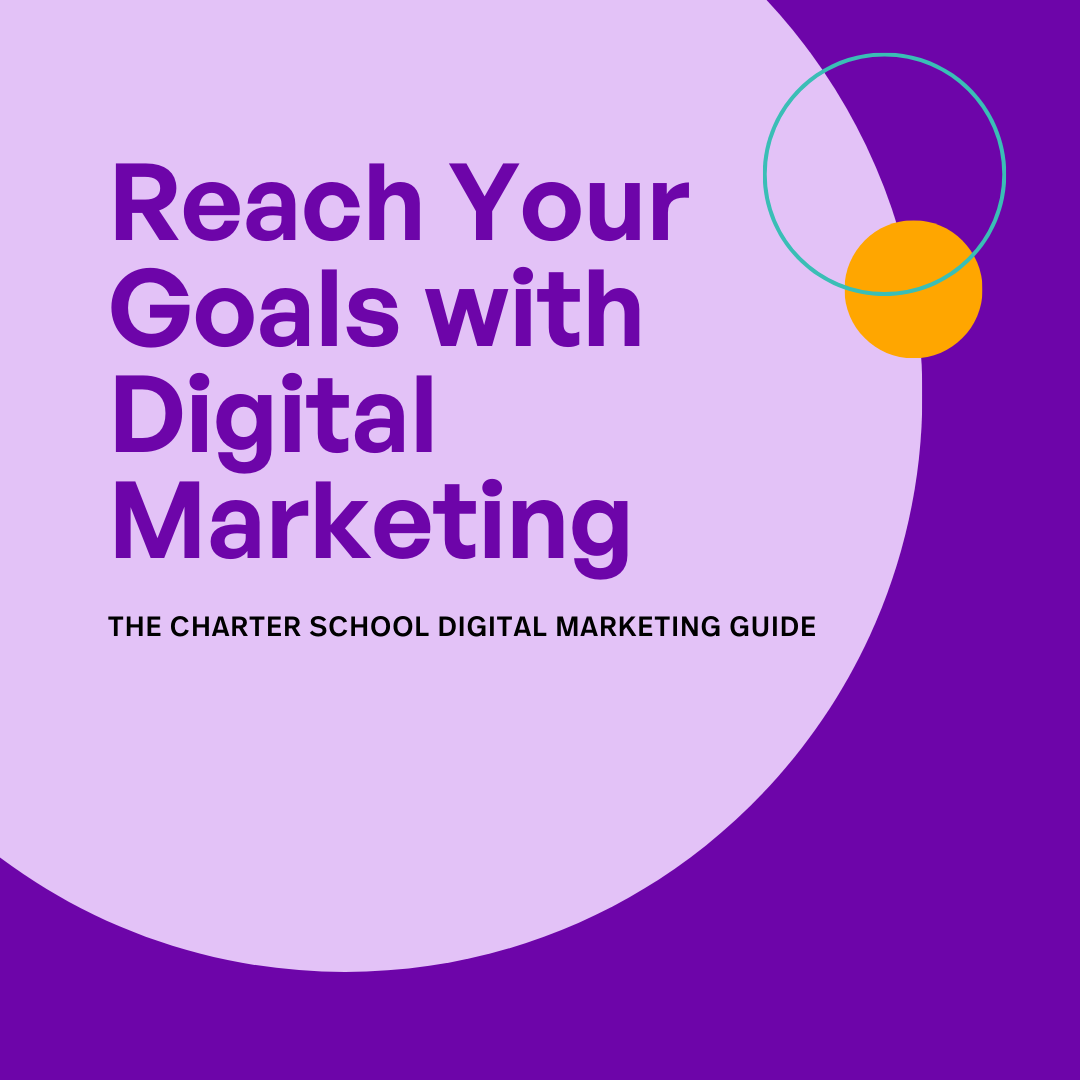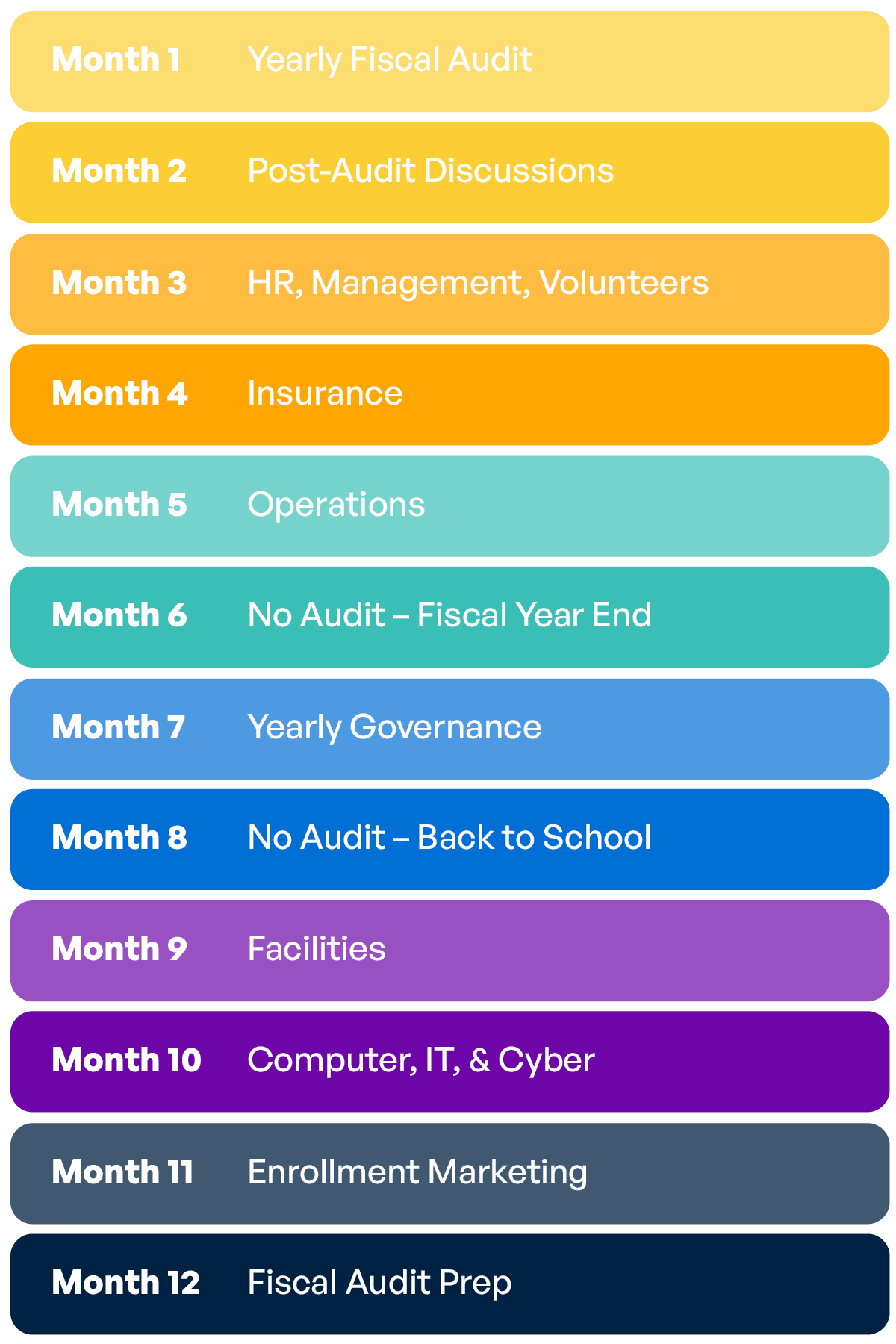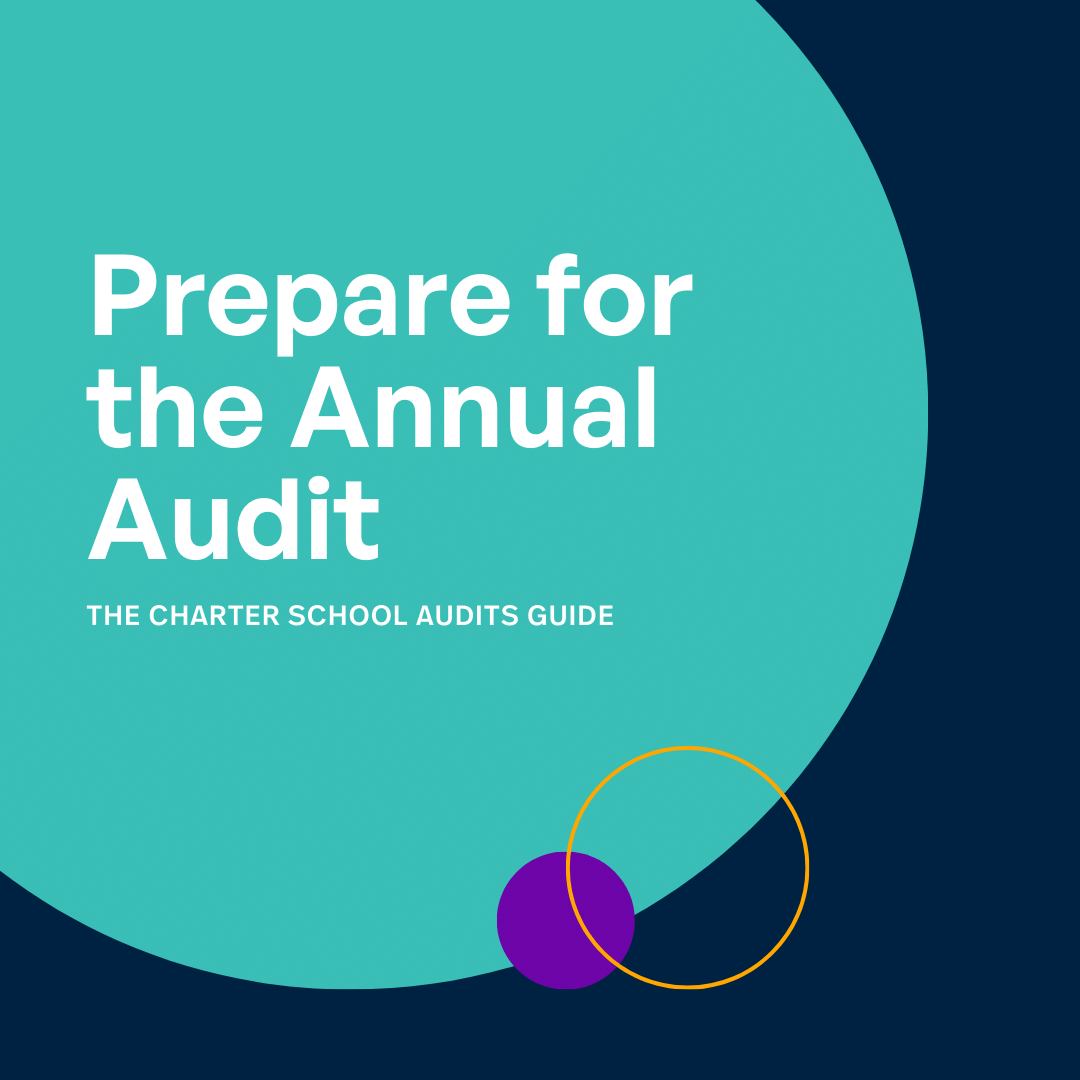In this session, Ashley McQuarrie and Sarah Scheel joined Michael Barber to discuss how to keep families engaged after they’ve enrolled in your school. You’ve done the work, you’ve got them to the tour, you’ve done your ground game, and they’ve decided to enroll. Now what? It can often be months from the time that the families enroll to when they’re starting school. Here’s where staying engaged is key. The answer lies in ongoing communication: social media, newsletters, and emails.
Watch the video or read the transcript below for more.
Join the experts as they answer all your questions live on Thursdays on YouTube at 10am PT / 12pm CT / 1pm ET. Charter School Capital – YouTube
Read full transcript here:
Michael B (00:15):
All right. Hi everyone. I’ve got everybody off mute, got everybody on the screen, and we are rolling. Welcome back to our every Thursday conversation on all things enrollment marketing. I know it’s Tuesday. It is not Thursday. We shifted this conversation last week due to some personal challenges with the crew that you see in front of you, so we appreciate your flexibility. And I’m really happy to be joined by two of my colleagues this morning, a new face, Sarah Scheel. Welcome to our Thursday Live, Sarah, thanks for joining us.
Sarah S. (00:46):
Hi, I am excited to be here.
Michael B (00:47):
Sarah’s a project manager on our enrollment marketing team. And we’ve also got my fearless companion, who’s back like she is every other week, Ashley MacQuarrie. Ashley, welcome back, and thanks for being here.
Ashley M (00:59):
Thanks, Michael.
Michael B (01:00):
All right, we’re going to hop right in to some topics. We’re going to talk specifically, kick it off this morning with a question around how to keep per perspective families engaged with your school. We’ve had some discussions about this topic, about, hey, you’ve got a relationship with a family. You’ve driven them to some sort of form, they’ve converted them. How do you keep having those conversations so eventually they decide to enroll in your school? I’m teeing that question up to start over to Sarah.
Sarah S. (01:28):
Yeah, thank you. I think this is a really exciting part of the process, right? Because you’ve done the work. You’ve got them to the tour, you’ve done your ground game, and they’ve decided to enroll. And sort of now what? We know that can often be months before school starts from the time that the families enrolled to when they’re starting school. And we often know that families will enroll in more than one school sometimes. So this is where I think is an important part to keep staying in front of those families and be engaged with them. And one of my favorite ways to do this is ongoing communication. And this can be social media. I know we all know Facebook, but I got to say it. It’s free. It’s easy. It’s a great way to share, in real time, what’s going on at the school, photos. Newsletters, and emails, I love this one. This is a way I think you can really bring in new families to your school community and kind of peel back that curtain a little bit, right?
(02:37):
Because these families, maybe they’ve done a tour or they came to an open house, but they haven’t really begun to engage with the school community yet. And you don’t want to overthink what’s in the newsletter. It could be a message from the principal, it could be, here’s an activity that we did,” or here’s like a service that we have for you. We have a really low counselor at a student ratio or something. And just let them know what they can expect when they come to your school. And I think that this could apply to existing families as well, right? It doesn’t just have to be for new families. And I think that it’s a great way to have them feel like they’re part of your community when they maybe haven’t had the chance to do that yet.
Michael B (03:28):
Ashley, any additional thoughts there you want to add?
Ashley M (03:32):
Yeah. I think what Sarah said too about not ignoring your current families and this be a great tool for your current families as well. That ongoing communication through the spring and summer can really help. You never know, sometimes your families might be considering a switch, and so reminding them kind of your importance to your community and all of the things that you offer through the spring and the summertime, I think can also help with retaining maybe returning families, in addition to those families who are choosing you for the first time.
Michael B (04:03):
Yeah, for sure. Can you talk about specifically how to leverage community events like open houses and their importance to keeping families engaged? And I’ll turn the question to Sarah first.
Sarah S. (04:14):
Yeah. I’m glad you brought that up because I think that being present in your community is really important. And this can be the open house, but it can also be out and about. Does your community have a summer concert series that lots of families are at, or is there an opportunity to get involved with a fun fair that comes to town every summer? Meet your families and potential families where they are and be a member of your community. And I think people will really be… They’ll be impressed by that, and they’ll recognize that. And they’ll think, “Oh look, they’re out here and this is so exciting. I’m getting a chance to have this in-depth conversation that I didn’t get to have earlier,” or maybe get that teacher in a one-on-one. Same for open houses.
(04:59):
I know as a parent, any opportunity that I get to step into my child’s school or classroom, it’s always so eye-opening and I appreciate it so much because you’re not attending the school, you don’t get to go every day. So yeah, I think that it’s very important to have those open houses and to look for opportunities to get out and be part of your community.
Michael B (05:22):
What are some of the ways, whether they’re at a community event or whether they’re at an open house, that you can build that relationship with a prospective family? Sarah, would love some thoughts there from you.
Sarah S. (05:35):
Yeah. I think it can be really effective to have some kind of activity, something to sort of draw people in. And depending on the age group of the students in your school, you can come up with a fun kind of themed activity for those ages, a STEM activity, if a STEM school or prize wheels. It doesn’t have to be anything over the top, but just something to get them to come up and be engaged. And then once you’ve got them there, really important to have some kind of takeaway. Is it a piece of swag? Is it a flyer that you’ve created? And a way to capture leads too. Have a pen and paper, have some way for those people to leave more information to be contacted if they want to, and give them something to take away.
Michael B (06:21):
Yeah, such good thoughts there, for sure. One question related to open houses. We talk a lot about open houses as being a way to drive prospective families, but I would imagine it’s probably a great tactic to have current families there, and also just open up the school at those moments where you are bringing in perspective families to also invite back current families because there may be improvements that you’ve made to the school, there could be something you want to show off, but also those conversations that could happen with current families across perspective families. Can you talk about how you can… And I’ll turn this to Ashley first and we’ll come back to Sarah. Have you seen schools bring in current families to open houses as well? And how have they’ve done that?
Ashley M (07:03):
Yeah, and we use open house kind of interchangeably to talk about both prospective families and current families. But we know a lot of schools, when they talk about open houses, they’re talking about that event that happens after school has started and the fall, and it’s the first opportunity for parents to chat with their kids teachers and learn about what’s going on. But we’re kind of talking about these opening up the school and just welcoming the community in. And absolutely, getting returning families to participate as well, I think is a great idea. Parents want to hear from other parents. I think another tactic we see what schools actually use for tours that I think you could use an open house. We were talking their PM, or a writer on our team who said that when a school has a student lead a tour of the school, it makes them just feel-
Michael B (07:49):
That’s good idea.
Ashley M (07:50):
… so excited about the school, and yes, I want my kid to go here. And so if there’s a way to incorporate students into your open house and have them talk a little bit about the school or have them lead a little walkthrough of the campus, I think that’s a great idea, because the kids are going to resonate with it. The parents are going to love it. It’s adorable. Why not?
Michael B (08:08):
Yeah, for sure. Any other thoughts there, Sarah, about making sure you’ve got current families that at open houses to foster those relationships with prospective families?
Sarah S. (08:17):
Yeah, no, I agree with everything Ashley said. I think that, like we said, open house is kind of a loose term. And it could be an art show or a ice cream social or any kind of event that brings families together, because we also know that word of mouth is so important. And if you’re a new family and you’ve been invited to attend a ice cream social in the springtime at your new school and you get a chance to meet other parents, who’s not going to love that? And it’s a really easy way to bring the new families in and have them feel like, “Oh, they can meet people and it’s a social event. And like I said, it just keeps coming back to that building community, having parents feel like they’re involved in the school and that they’re not just sending their kids off to a vacuum. It’s a community and they’re part of it, and they’re invited to be there. And it can look different for every school. These are just some ideas that come to mind.
Michael B (09:11):
For sure. Yeah, absolutely. I appreciate those thoughts. Okay. I want to want to tee this up to the viewers that we’ve got live. If you’ve got any questions for Sarah or Ashley, we’d love to have them in the chat. Feel free to drop them in there. If you’re on YouTube on your desktop or your Mac or laptop, the chat’s on the right hand side. If you are on a mobile device, it’s usually below the fold. So tap right in there and if you’ve got any questions. Otherwise, I’m going to ask my token ending question that we have wrapped up with a couple of guests, why enrollment marketing is so important for schools. I’m going to tee this up to Sarah first and say, tell us why enrollment is so important, or if you’ve got one tip that you want to make sure you leave school leaders with, we’d love to hear that as well.
Sarah S. (09:59):
Okay. Well, I think that enrollment marketing is important because I work really closely with schools and school leaders, and it’s a busy job and there’s a lot going on. And sometimes enrollment and marketing isn’t always top of mind, but like we talked about, building that sense of community and outreaching to new families is so important, but it’s also easy to let it go by the wayside. So I think having a dedicated team that’s going to help you with that and constantly every day be thinking about how can I drive students to this school is going to make it so much easier for a school leader to do their job and focus on what they do best, which is teaching the students.
Michael B (10:39):
Yeah, it’s such an important point about making sure you’ve got that focus on your students, on your mission, bringing that mission to life each and every day. And enrollment, just like education and marketing in general, is having changes that are happening. Any number of changes that are happening on a daily basis and having an expert that can help guide you is going to likely save you money, likely save you time, likely save you frustration, and hopefully make sure that there are kids in your school that were not there before. So I turn this back over to Ashley for her thoughts on, hey, why EM? Or if you’ve got, and I used an abbreviation there. I shouldn’t. Why enrollment marketing, or one tip that you want to leave our school leaders with this week?
Ashley M (11:25):
I think what Sarah said, and what you said actually, you need new kids to keep your school alive. You need new kids. And also, you need new families and students who can really breathe new life into your school community and keep it thriving and vibrant. And a lot of schools, you might be able to get by just replacing your graduating class every year without doing a lot of work. But if you want your school to grow and you want to serve more kids, you’re going to have to get out there and meet them where they are and give them the kind of messaging and information that they’re looking for to choose your school. It’s not just going to happen organically necessarily.
Michael B (12:06):
Yeah, absolutely. Okay, well we’ve gone 12 minutes, so we’re over by two. I want to be respectful of all our viewers’ time and my colleagues’ time, Sarah and Ashley here. So we’ll wrap it up. I just want to let you know we’ve had some great conversations. This is episode nine of our series. Already can’t believe we’ve done this nine times. The weeks are flying by. I think I noted in the team chat yesterday, day 53 of the year already, just insane to think we’re that far through the year. But we’ll be back on Thursday. Ashley, and I’ll be back on Thursday for episode 10. We’ve also got some great EPIs past episodes with one of our graphic designers, Nikki, on all things branding. I would encourage you to check out that. We had our friend Tony Solorzano join us, one of our client services reps who engages with a lot of our school leaders on the efforts we work with whim.
(12:55):
And he gave just such good advice for school leaders to think about as it relates to enrollment marketing. So I would encourage you to check out episodes one through eight. There’s tons of great knowledge there for you to have at. Otherwise, we will see you in two days on Thursday at a different time. We usually do this at 10:00 AM Pacific, 1:00 PM Eastern, but we’re making up for last week’s episode because of some personal challenges. So we appreciate you coming back to all of us that joined us. And hey Sarah, thanks for taking the time to join us this week. We really appreciate it.
Sarah S. (13:25):
Oh, I loved being here. Thanks for having me.
Michael B (13:27):
Awesome. And Ashley as always, thank you again for being here. We’ll see y’all on Thursday. Thanks. Take care, y’all.
Ashley M (13:33):
Thanks.
Sarah S. (13:33):
Bye.



